31 Best Workout For Weight Loss
Table of Contents
Introduction:
When it comes to weight loss, incorporating a well-rounded workout routine is essential. Exercise not only helps burn calories but also improves overall health, boosts metabolism, and increases muscle tone. A combination of cardiovascular exercises, strength training, and flexibility work can create a comprehensive workout plan that supports weight loss goals.
In this guide, we will explore various workout strategies that can aid in weight loss. It’s important to note that while exercise plays a significant role in shedding pounds, it should be complemented by a healthy diet and lifestyle choices for optimal results. Additionally, it’s always advisable to consult with a healthcare professional before starting any new exercise program, especially if you have any underlying health conditions or concerns.
Whether you’re a beginner or an experienced fitness enthusiast, this guide will provide you with a range of exercises and tips to help you design an effective workout routine for weight loss. Remember, consistency and gradual progression are key, so start at a comfortable level and gradually increase the intensity and duration of your workouts as you build strength and endurance.
So let’s dive in and discover the different components of a weight loss workout routine, including cardiovascular exercises, strength training, and flexibility exercises, to help you achieve your fitness goals and embark on a healthier lifestyle.
Benefits Of Exercises:
- Strengthens the heart, helping it to pump blood more efficiently.
- Improves blood flow and boosts your circulatory system.
- Increases lung capacity and breathing ability.
- It boosts your metabolism.
- It helps weight loss by burning fat.
- Reduces the chance of having a heart attack, having high cholesterol, having high blood pressure, and having type 2 diabetes.
- Improves bone density.
- Reduces stress and improves mood by increasing endorphin secretion.
- Balance and coordination are improved.
- Improves mood and relieves stress.
Weight Loss Exercises:
Jumping Jacks
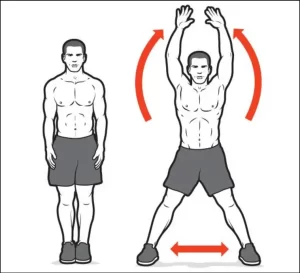
How to do it:
- Stand up straight, with your feet close together, shoulders back, and arms at your sides.
- Keep your chest and head high, and constantly look in front. Spread your legs while jumping with your knees slightly bent.
- As you jump, extend your arms wide and over your head.
- You should land softly on your midsoles, which should be approximately shoulder-length apart.
- Reverse these steps to return to the beginning and repeat.
Jump Squats
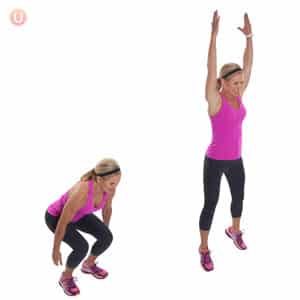
How to do it:
- Maintain a straight back and feet that are close together.
- Pull your shoulders and elbows back, and make a fist in front of you.
- Jump with your head up and forward, spreading your legs to land in a squat position.
- Your knees should be 90 degrees apart.
- Return to your starting position.
Jump Rope
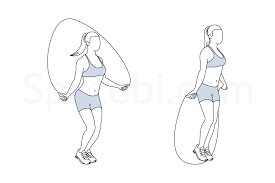
How to do it:
- Stand up straight with your feet close together, chest and head up, and constantly look forward.
- Pull your shoulders and elbows back and hold them in place.
- Rotate the rope using your wrists rather than your arms. Maintaining a tiny bend in your knees when jumping, softly land on the midsoles of your feet.
High knees

How to do it:
- Stand up straight, with your feet slightly apart, shoulders back, and arms at your sides.
- Keep your head high and your gaze forward.
- Raise your right leg as high as you can comfortably while driving your left arm forward as if you were running.
- As you lower your knee, softly rest on the midsole of your foot and swiftly switch to your other knee and arm.
- Repeat. High knees should appear to be exaggerated running.
Butt Kicks
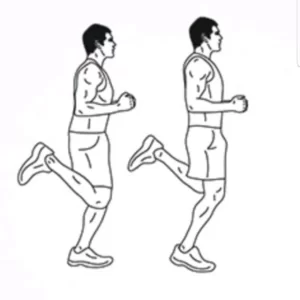
How to do it:
- Straighten your spine and bend forward gently.
- Your feet should be slightly apart, your shoulders should be back, and your arms should be by your sides.
- Keep your head high and look forward.
- Standing on your right leg, pull your left heel as close to your buttocks as you comfortably can while driving your right arm forward as if you were running.
- As you lower your foot, land softly on the midsole and swiftly switch to your other heel and arm.
- Repeat. Butt kicks, like high knees, should appear to be exaggerated running.
Mountain Climbers

How to do it:
- Start in a push-up position, with your hands shoulder-width apart and your feet slightly apart.
- Engage your core to keep your back straight and bring your right knee to the center of your body.
- Return to the starting posture and switch to your left knee swiftly.
- If you exercise on a hard floor, you should have a yoga mat or foot sliders.
Donkey kicks
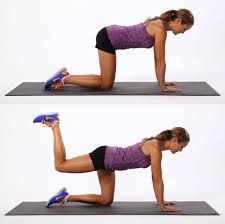
How to do it:
- Get down on your knees.
- Your hands should be in line with your shoulders, and your knees should be in line with your hips.
- Engage your core to keep your back straight, and begin with your right leg.
- Keeping your leg at a 90-degree angle, kick it as high as you can behind you and slowly lower it.
- Repeat for the desired number of repetitions, then move to the opposite leg to finish the set.
Flutter Kicks
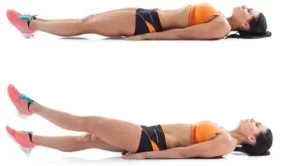
How to do it:
- Lie on your back, legs together, and palms tucked under your buttocks for support.
- Suck in your stomach and lift your legs with your abs.
- Kick your feet up and down while keeping your abs engaged.
Bicycle Crunches
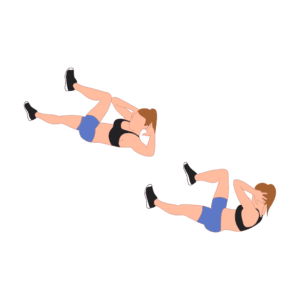
How to do it:
- Lie on your back with your feet flat on the ground, your knees bent, and your hands behind your head.
- Engage your core, pull your right knee to your chest, and elevate your left leg at a 45-degree angle while keeping your left leg straight.
- Lift your shoulder blades off the ground (being careful not to pull on your neck) and twist your upper body (keeping your arms straight) to bring your left elbow near your knee as your knee reaches your chest.
- Continue with the other knee and elbow.
Burpees
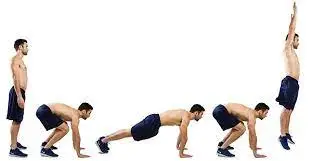
How to do it:
- Place your feet shoulder-width apart while squatting with your knees bent.
- With your back straight, place your hands on the ground in front of you and kick your feet back to get into a push-up posture.
- Engage your core to keep your back straight and perform a push-up.
- Return your feet to the starting position, raise your body, and jump.
Side Lunges
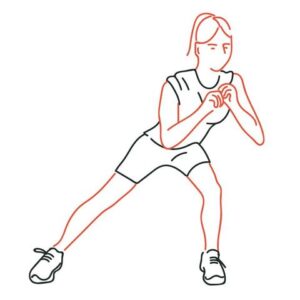
How to do it:
- Begin by spreading your feet as far apart as your hips.
- Then, in a side lunge, step your right foot to the right and bend your right knee.
- Maintain a straight left leg while reaching the right glute back. Return to the center by pressing down through the right heel.
- Then take a stride forward with your left foot and lunge to the left.
- Maintain control of your movements and go from side to side as soon as you can.
Plank Shoulder Tap

How to do it:
- Begin in a plank position, with your shoulders over your wrists.
- Spread your fingers as wide as possible.
- Pull your navel in towards your spine, shift your weight to your left hand, and tap your left shoulder with your right hand.
- Then, with the right hand down, swap to the opposite side and repeat 10 times on each side.
Plank to Downward Facing Dog
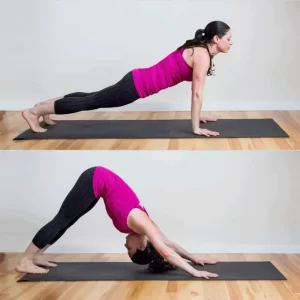
How to do it:
- Begin in a plank position, with shoulders over wrists.
- Pull your low abs in while swiftly piking your hips up and back into a downward-facing dog.
- Raise your heels to the ground and your glutes to the ceiling.
- Press down hard with your hands.
- Then swiftly return to plank position.
- Repeat 10 times more.
Switch Jumps With Front Kick
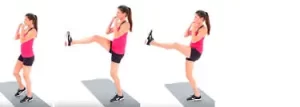
How to do it:
- Begin with a low lunge and your left knee forward.
- Jump up while switching legs in the air, then land in a low lunge with your opposite leg ahead.
- Before kicking your right leg forward for one rep, return to the starting position.
- Repeat for 30 seconds on each side.
Squat Opposite Toe Tap
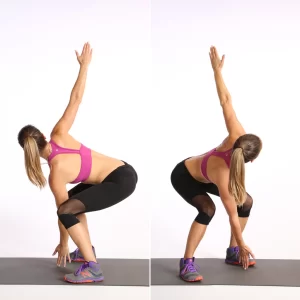
How to do it:
- Put your feet hip-width apart and stand straight up.
- Squat back, keeping your knees over your ankles and your weight in your heels.
- As you rise, kick your left leg across your body and tap your left toe with your right hand.
Thrusters
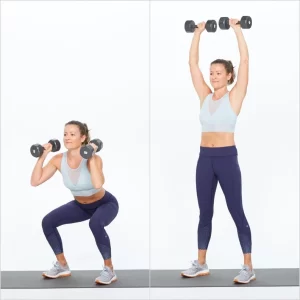
How to do it:
- Start by standing position with your feet hip-width apart.
- Place two light dumbbells with the thumbs facing inward on your shoulders.
- Squat with your knees over your ankles and your weight on your heels.
- Extend your arms upward as you rise to your feet for an overhead shoulder press.
Jumping Lunges
Calves, quads, hamstrings, adductors, hip flexors, glutes, and lower abs are all worked on.
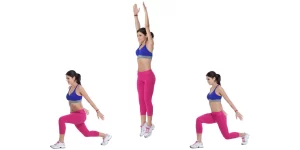
How to do it:
- Stand straight with your legs spread apart by your shoulders.
- Place your left leg in front of you, keep your back straight, flex your knees, and descend. Your right leg’s femur should be perpendicular to the floor.
- Before landing, place your right leg in front of you, with your left femur perpendicular to the floor.
- Before landing, put your left leg in front of you.
- Increase the intensity of your workout.
Sprint:

How to do it:
- Begin by jogging slowly on the treadmill for 10 seconds.
- Set your treadmill to 12-14 mph and begin running. For 20 seconds, sprint.
- Rest for 10 seconds and then walk or jog at 4-6 mph.
- Sprint for 20 seconds more, then jog at 4-6 mph.
- Do this three times.
Surrender
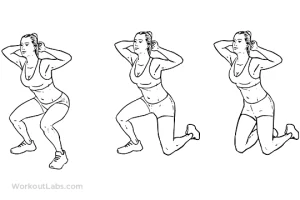
How to do it:
- Begin in a squat with your hands behind your head and your elbows spread wide.
- Step back with your right foot and kneel, followed by your left leg, to form a kneeling position resting on your knees.
- Then, step your right foot back out, followed by your left, to return to a squat position.
- Switch sides.
Russian Twist
Obliques, lower abs, upper abs, hamstrings, and quads are all worked on.

How to do it:
- Sit on the floor with your legs close together, your knees bent, and your feet flat on the mat.
- Lean back and raise both feet off the floor.
- Join your palms together while keeping your core engaged. This is your starting point.
- Twist your body to the left side.
- Additionally, tilt your head to the left.
- Turn to the right.
- Do 40 reps at a faster rate.
Battle Rope
Biceps, shoulders, chest, upper back, glutes, quads, and hamstrings are all worked on.
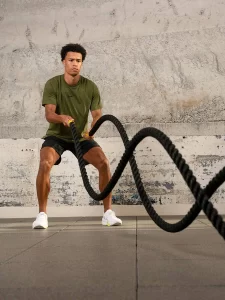
How to do it:
- Hold the battle rope’s handles. Your feet should be shoulder-width apart. Roll your shoulders back, chest out, and maintain a straight face.
- The knees should be bent to achieve a half-sitting position. Maintain a 90-degree angle with your upper arms and your elbows close to your torso.
- Pick your right arm up slightly and slam the rope on the floor as you lower it. Simultaneously drop and pick up your left arm to slam the rope on the floor.
- Increase your speed once you’ve gained momentum. Consistently keep your shoulders back and your back straight.
Plank Pose (Phalakasana)
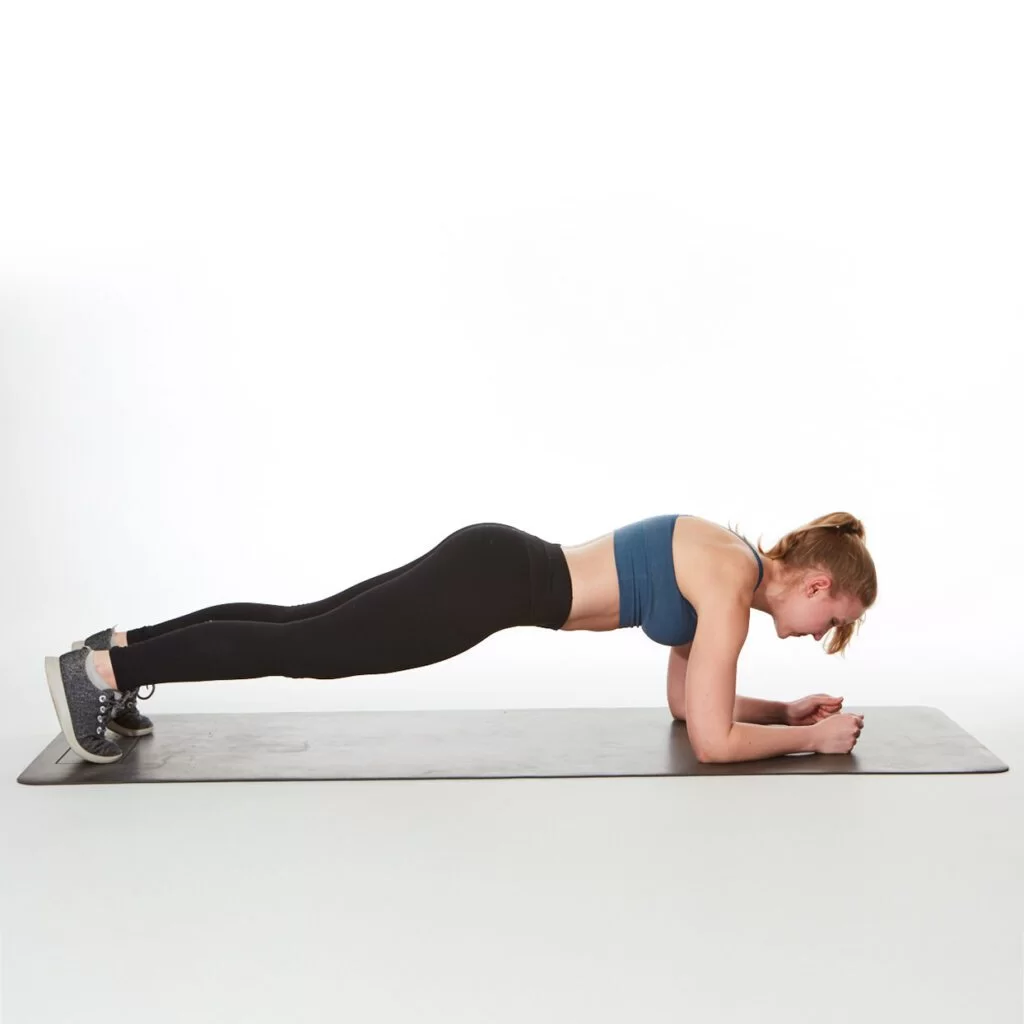
How to do it:
- A plank is an excellent core-strengthening pose. It may appear easy, but the benefits are huge.
- Planks strengthen the shoulders, back, buttocks, thighs, abdominals, and core.
- To perform a plank, begin in a push-up position and lift your body off the mat using your hand, wrist, and elbow.
- Relax your neck and look down. Hold on to your position as long as you can.
Bow Pose (Dhanurasana)
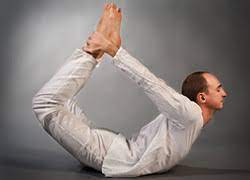
How to do it:
- This asana develops your core and abdominal muscles while also improving your posture and stretching your entire body.
- The back, chest, abdominals, legs, hips, and arms are all targeted. To do the pose, keep your face down, bend your knees, and take your ankle with your hands while keeping your knees hip-width apart.
- While grasping your ankle, raise your chest and thighs off the floor.
- Continue to breathe and aim to hold the stance for at least 20 seconds.
Triangle Pose (Trikonasana)
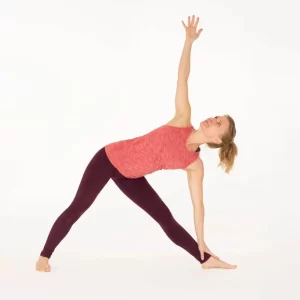
How to do it:
- The triangle pose engages the lower obliques, strengthens the thighs, increases blood circulation throughout the body, and relieves back pain.
- This pose might assist you begin your weight reduction practice by burning fat around your tummy and waist.
- Stand three feet apart, lean down, turn your left leg slightly to the right, and place your right foot forward.
- Extend your left hand to touch your feet or the floor, and your right hand to touch the ceiling.
- Hold the posture for 20-30 seconds.
Bridge Pose (Setu Bandhasana)
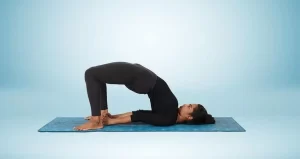
How to do it:
- Lie on your back, bend your knees, and push down with your feet flat on the floor.
- Push your torso up and place your hand below your hips, palm down.
- You keep your head and neck flat on the floor.
- This position targets the thyroid, glutes, shoulder, spine, thighs, and back, which improves digestion and muscular tone, reduces hypertension and menopausal symptoms, and is thus beneficial for weight loss.
Downward Facing Dog Pose (Adho Mukha Svanasana)
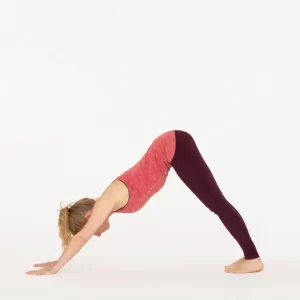
How to do it:
- If you want to tone your body, the downward-facing dog position is the way to go.
- This posture strengthens the arms, glutes, thighs, hamstrings, and back.
- It appears to be a resting stance, but when performed, you may feel the burn.
- Begin by putting your hands and knees about a foot apart on the ground.
- Straighten your legs by raising your knees off the floor and pushing your heels down.
- Use palm pressure to push them to the ground. Hold the posture for 10 seconds.
Chair Pose (Utkatasana)
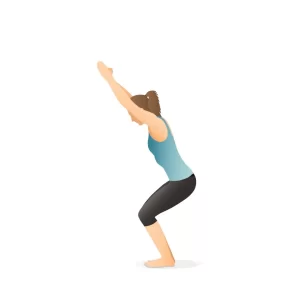
How to do it:
- The chair position has many benefits and is the ideal leg exercise.
- Although there are various varieties of chair positions, all of them are excellent for muscle building.
- This posture focuses on lower-body muscles such as your hips, waist, abdominal area, pelvis, inner and outer thighs, and glutes.
- Begin by standing upright, making a namaste sign with your palms, and raising your arms above your head. Bend your knees to the point when your thighs are parallel to the ground.
- For rapid weight reduction, hold the position for 30 seconds.
Warrior I Pose (Virabhadrasana)
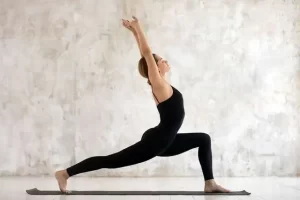
How to do it:
- Warrior I is a one-of-a-kind upper-body workout.
- The purpose of this stance is to strengthen the arms, shoulders, and legs. It promotes equilibrium and energizes the entire body.
- To do this posture, stand upright, stretch your legs three to four feet apart without bending your knees, and keep your back straight.
- Bend your knees and shift the upper half of your body sideways. Raise your hand straight, as if it were a wing.
- Hold the position for ten seconds.
Boat Pose (Navasana)
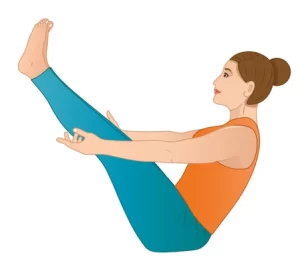
How to do it:
- While practicing this stance, your body should be shaped like a boat, as the name says.
- Although it is simple, maintaining the stance requires balance.
- Sit on the ground, straighten your legs, try to lift your legs, and now extend your hand parallel to the floor in the shape of a V.
- Hold the posture for 10-20 seconds.
Standing Forward Bend Pose (Uttanasana)
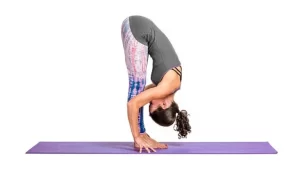
How to do it:
- Stand with your feet hip-width apart.
- Bend down, place your palms on the floor, don’t bend your knees, and make sure your forehead hits your knees.
- By extending your hamstrings and abdominal muscles, this pose promotes digestion.
- It also aids in the improvement of your mental and physical well-being.
Upward Facing Dog Pose (Urdhvamukhasvanasana)
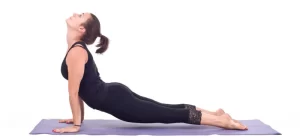
How to do it:
- To get to this position, lie on your stomach and stretch your hands forward, palms down, below your shoulders.
- Elevate your body up, look forward, keep your shoulders away from your ears, relax your glutes, elevate your knee and hip, and press your feet and hand into the mat.
- It is great for stretching and maintaining body weight equilibrium.
Summary:
Weight loss is a process that involves reducing body weight, typically through the loss of fat. It is often pursued by individuals aiming to improve their health, enhance their appearance, or manage certain medical conditions. While there are various methods and approaches to weight loss, the fundamental principle revolves around creating a calorie deficit, which means consuming fewer calories than the body expends.
To achieve weight loss, individuals can focus on implementing a combination of dietary changes, increased physical activity, and healthy lifestyle habits.
Consider the following important points:
Calorie intake: Managing calorie consumption is crucial for weight loss. This can be achieved by adopting a balanced, nutritious diet that includes a variety of fruits, vegetables, lean proteins, whole grains, and healthy fats. Avoiding or minimizing high-calorie, processed foods, sugary beverages, and excessive snacking can also contribute to weight loss.
Portion control: Monitoring portion sizes is important to avoid overeating. Using smaller plates, measuring food quantities, and being mindful of portion sizes can help regulate calorie intake.
Regular physical activity: Engaging in regular exercise and physical activity is essential for weight loss and overall health. Combining cardiovascular exercises (such as walking, running, and cycling) with strength training can help burn calories, build muscle, and increase metabolism.
Lifestyle changes: Adopting healthy lifestyle habits can support weight loss efforts. These include getting adequate sleep, managing stress levels, staying hydrated, and avoiding excessive alcohol consumption.
Monitoring progress: Keeping track of food intake, physical activity, and progress can provide valuable insights and motivation. Various tools and methods, such as food diaries, smartphone apps, or fitness trackers, can help monitor and adjust weight loss strategies.
Seek professional guidance: Consulting with healthcare professionals, such as registered dietitians or doctors, can provide personalized advice, guidance, and support during the weight loss journey. They can help create individualized meal plans, recommend appropriate exercise routines, and address any underlying health concerns.
FAQs:
What is the best workout for weight loss?
The best workout for weight loss combines cardiovascular exercise with strength training. High-intensity interval training (HIIT), circuit training, and aerobic exercises like running, cycling, or swimming are effective for burning calories and shedding excess weight.
Do I need to join a gym to lose weight?
No, you don’t necessarily need to join a gym to lose weight. You can do various exercises at home or outdoors, such as bodyweight exercises, running, cycling, or following workout videos online. However, gyms can provide access to a variety of equipment and classes that may enhance your weight loss journey.
Is it better to work out in the morning or evening for weight loss?
When you can continuously commit to your fitness routine, that is the perfect time to work out. Whether you choose morning or evening workouts, the most important thing is to maintain regularity and consistency with your exercise regimen.
How long should my workouts be for weight loss?
The duration of your workouts can vary depending on your fitness level and the intensity of the exercises. Generally, aim for 30 minutes to an hour of moderate-intensity cardio exercises or 20 to 30 minutes of high-intensity interval training (HIIT) workouts. Strength training sessions can range from 20 to 45 minutes, depending on the number of exercises and sets.
Can I spot and reduce fat in specific areas?
Spot reduction, the idea of targeting fat loss from specific areas, is a common misconception. When you lose weight, you lose it from all over your body, not just one location. However, strength training exercises can help tone and build muscle in specific areas, giving them a more defined appearance.
How do I stay motivated to stick to my weight loss workout routine?
Staying motivated can be challenging, but setting realistic goals, tracking your progress, finding an exercise routine you enjoy, and enlisting the support of friends or a workout buddy can help. Vary your workouts, celebrate milestones, and remind yourself of the benefits of regular exercise for both physical and mental well-being.
Should I combine my workouts with a specific diet for weight loss?
Exercise alone can contribute to weight loss, but combining it with a healthy, balanced diet will yield better results. Consume less fat than you burn via exercise and daily activities to create a calorie deficit. For personalized dietary advice, consult a qualified dietitian or nutritionist.

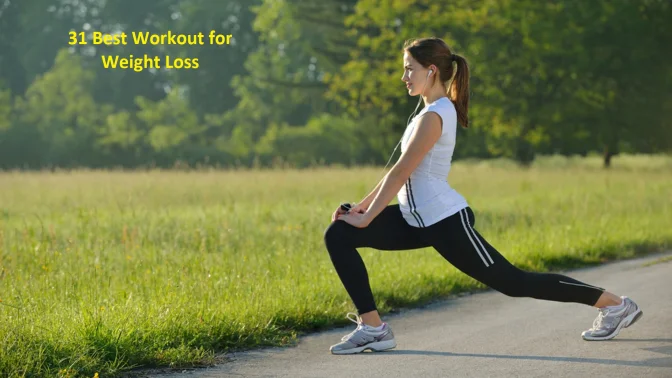
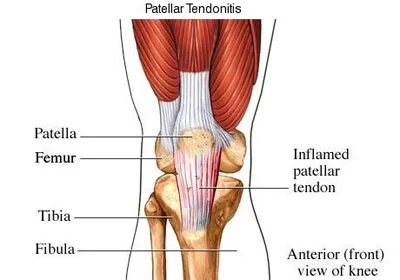
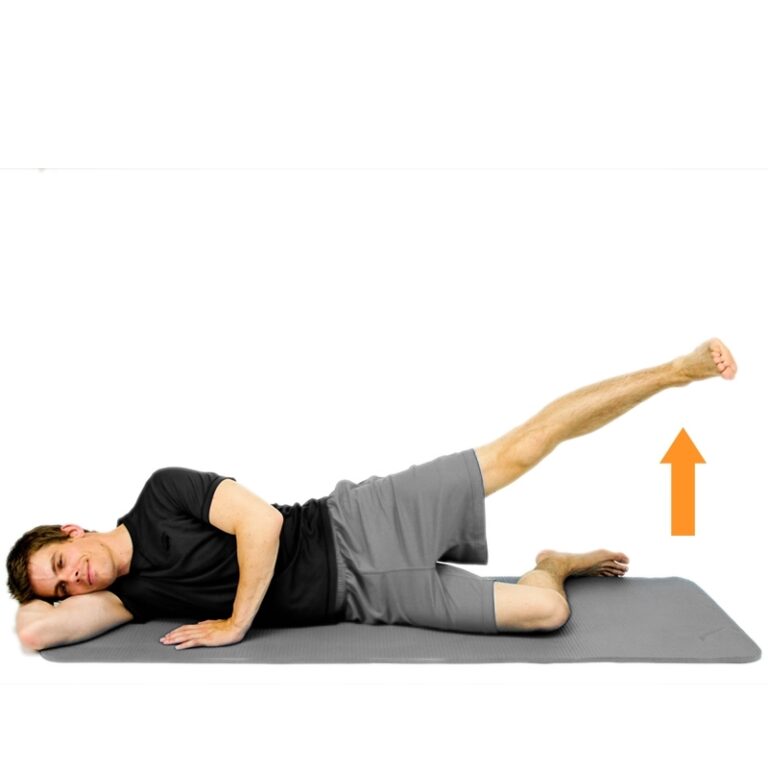
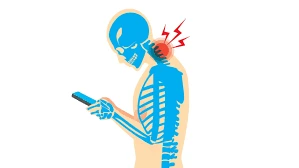
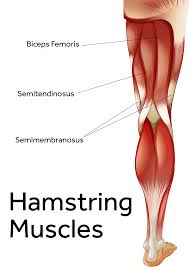

One Comment